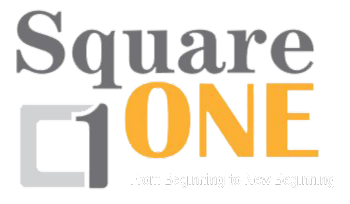Scoliosis In Teenagers – Symptoms And Treatments
Scoliosis is a condition that causes the spine to rotate and curve to the side, resulting in an abnormally curved spine. Although it can occur at any age, it’s particularly common among teens, especially in idiopathic scoliosis (where the cause of the scoliosis is unknown). Adolescent idiopathic scoliosis, which affects teens between 10 and 18, is the most common form of scoliosis, accounting for around 90% of all scoliosis in adolescence.
Although there is no cure for scoliosis, there are plenty of treatment options that can effectively curb the progression and help to correct the spine. Additionally, there are many cases in which the curvature is mild and will remain stable, meaning that very little treatment will be required, if any. However, scoliosis must be diagnosed early so the spinal curvature can be monitored appropriately to determine if treatment is needed.
What Is Scoliosis In Teens?
Scoliosis is not uncommon among teens – it’s estimated that around 2% to 4% of adolescents have idiopathic scoliosis. More often than not, the curvature is mild, meaning that it measures less than 25 degrees and will remain stable and not progress to a more severe form. If this is the case, most scoliosis specialists will monitor the curvature to ensure it doesn’t progress. However, if it does progress or the curvature is over 25 degrees, they will treat the condition in various ways.
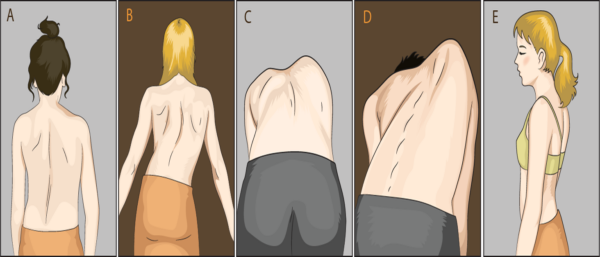 Fortunately, even if treatment is deemed necessary, teens with scoliosis are easier to treat because they are still growing, and the growth of the spine can still be influenced. This means that treatment methods like scoliosis-specific exercises and bracing can be incredibly effective.
Fortunately, even if treatment is deemed necessary, teens with scoliosis are easier to treat because they are still growing, and the growth of the spine can still be influenced. This means that treatment methods like scoliosis-specific exercises and bracing can be incredibly effective.
The Progression Of Scoliosis In Teens
One of the primary reasons adolescents with scoliosis need to be monitored closely is that the condition is more likely to progress quickly in teens than in adults. “Progression” refers to the worsening of the curvature. Scoliosis specialists will use the degrees of curvature chart to determine if the curvature is progressing and what kind of treatment is appropriate.
Because the spine of a teenager is still in the process of maturing, it’s more susceptible to changes. In addition, younger teens going through puberty will experience growth spurts, which can cause the curvature to worsen more rapidly.
For girls, the progression of scoliosis is more likely to increase during the growth spurt that often occurs between 10 and 12 years old. For boys, the progression is more likely to increase during the growth spurt between 12 and 14 years old. Because scoliosis curvature progression is more likely in teens, it’s imperative to monitor adolescent scoliosis closely.
Signs Of Scoliosis Among Teens
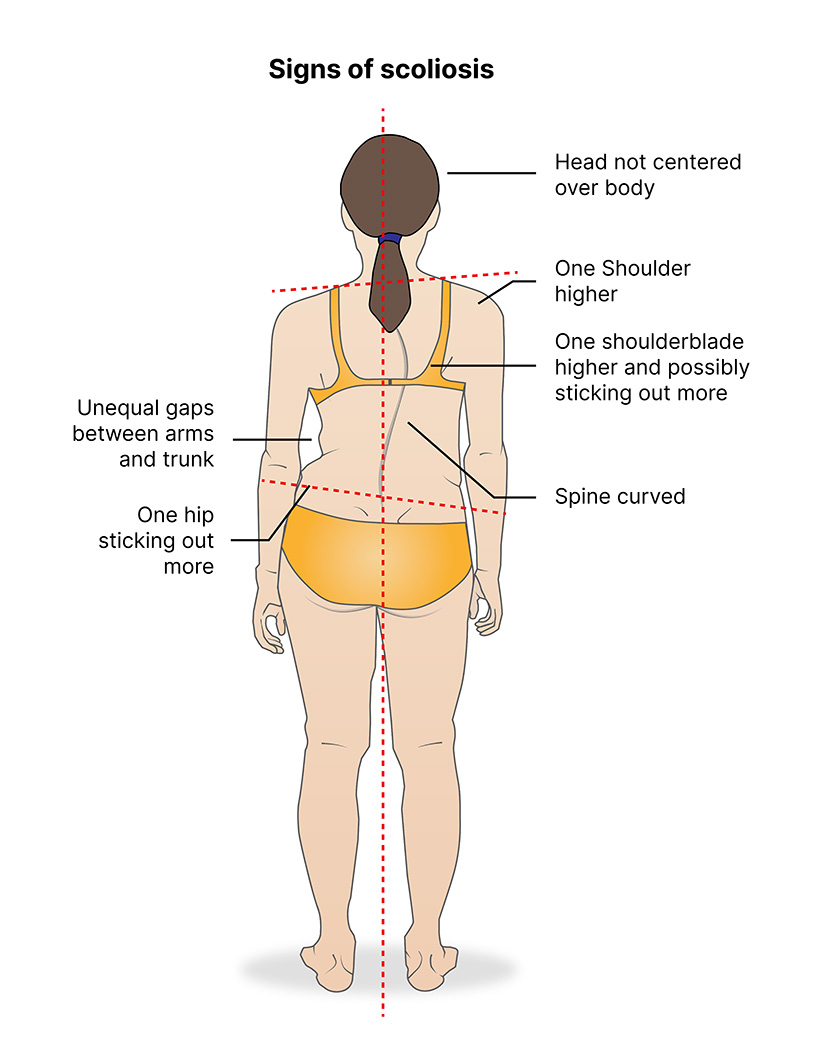
Scoliosis is a condition that can be detected by the naked eye in some cases, which is why you should be aware of the signs and symptoms.
One of the most common symptoms of scoliosis among teens is an asymmetrical appearance of the back. For instance, their shoulders may appear uneven, or one hip may be higher than the other.
Another sign is the rib hump, which is a protrusion along the spine when viewed from the side.
Other symptoms include one arm appearing longer than the other or an asymmetrical waistline.
It’s important to note that scoliosis is usually painless in teenagers, which means it can go unnoticed for a period of time.
Diagnosing And Screening Teens For Scoliosis
Although you can visually check for abnormalities in your posture that could be indicative of scoliosis, it’s important to get a professional diagnosis. Scoliosis specialists will first do a routine physical examination. Then, if they believe scoliosis might be present, they’ll order diagnostic imaging tests such as x-rays or possibly magnetic resonance imaging (MRI).
Forward Bending Test
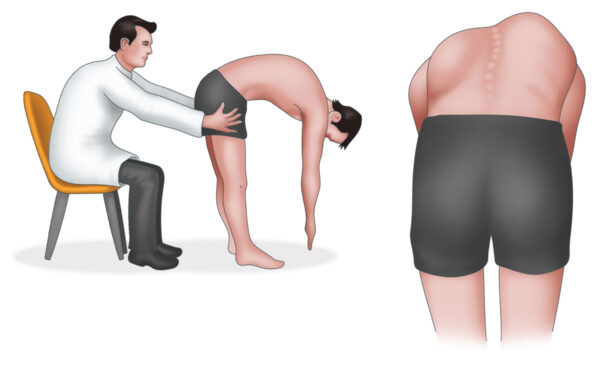 The forward bending Adam’s test is a basic screening test for scoliosis that can be done at home or in the doctor’s office. This test involves having the teen stand straight with their arms hanging at their sides and bending forward from the waist.
The forward bending Adam’s test is a basic screening test for scoliosis that can be done at home or in the doctor’s office. This test involves having the teen stand straight with their arms hanging at their sides and bending forward from the waist.
With this test, the specialist will look for an uneven appearance of the spine, an uneven distance between the ribs and hips, or a protrusion along the spine when viewed from behind.
If these symptoms are present, the specialist may order further testing. This test should always be done using a scolimeter. A scolimeter measures rotation in the spine and increases the accuracy of the forward bending Adam’s test.
X-Ray
The X-ray is the gold standard test used to diagnose scoliosis. X-rays provide a detailed view of the spine and allow the doctor to see the degree of curvature. To diagnose the condition as scoliosis, the spine must be curved more than 10 degrees and have rotation. They may also be able to detect any other underlying issues in the spine that may be causing the spine to curve.
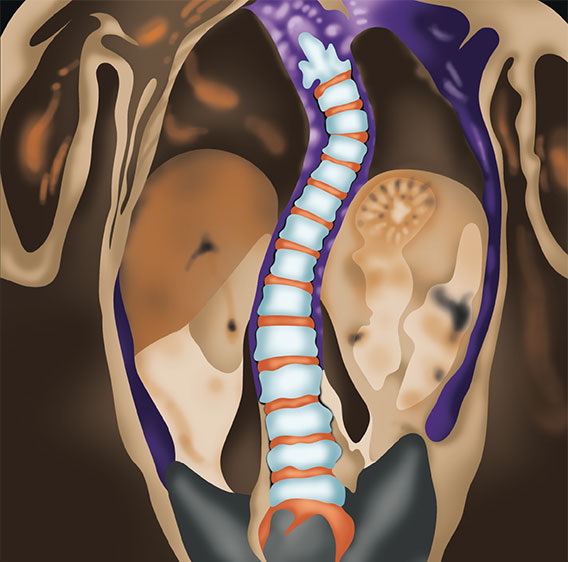 MRI
MRI
An MRI uses magnetic fields and radio waves to create detailed spine images. Whereas x-rays show the bones and joints in detail, MRIs also show the soft tissues such as muscles, ligaments, and nerves. This allows the doctor to see if there are any underlying conditions affecting these soft tissues that could be causing the curvature of the spine.MRIs are used to check for underlying pathologies that may be causing scoliosis.
Your Treatments Options
When treating adolescent scoliosis, speaking with a scoliosis specialist is incredibly important. Although regular doctors may be able to diagnose the condition, they won’t have the expertise required to treat it properly. For example, many general practitioners may prescribe painkillers or steroid injections if the teenager feels discomfort or pain. At Square One Health, we avoid pain medications as they do not treat the underlying cause. They can also be habit-forming and may even cause side effects.
When treating scoliosis, we create a personalized treatment plan based on the age and severity of the patient. With that in mind, the following are the common treatment options available:
Monitoring
At Square ONE, the first step we take when treating scoliosis is to monitor the condition’s progression. This involves taking x-rays periodically to track the degree of curvature. If the scoliosis is mild, no further treatment may be necessary as the curvature may not continue to worsen over time. However, if progression is identified, more active treatments may be required. Because teenagers are more prone to progression, it’s essential to monitor their condition closely, even if their spinal curvature appears mild.
It’s important to mention that it’s better to have scoliosis monitored by a specialist than a general practitioner because a specialist will more accurately identify when treatment is needed, when it’s most appropriate, and what the most effective treatment will be. Many times, a general practitioner will not understand how rapidly a curve can progress, and the best window opportunity for effective treatment will be missed as a result.
Scoliosis-Specific Exercise
Scoliosis-specific exercise can be an effective treatment for adolescent scoliosis. When done correctly, exercises can help improve posture and alignment while also helping to strengthen the muscles around the spine. This can help improve alignment, flexibility, and range of motion. As a result, exercise can help stabilize the spine and reduce the amount of progression that can occur.
One thing to remember is that doing the wrong exercises can potentially do more harm than good. At Square ONE, we prescribe scoliosis-based exercises designed specifically to target the condition using various proven methodologies, including chiropractic biophysics (CBP), the Schroth method, and the Scientific Exercises Approach to Scoliosis (SEAS).
Custom Bracing
In some cases, a brace may be prescribed. These braces are designed to put the spine in a 3D corrected position to not only reduce curve progression but in many cases to correct the curve. Braces are particularly beneficial for teenagers who are still growing and whose spine has not yet finished developing. However, more traditional braces, such as the Boston brace, are known for being uncomfortable and can even cause musculoskeletal problems in some cases.
At Square ONE, we use ScoliBrace Technology, which is designed to be lightweight and comfortable. The braces are made using a 3D printing process, allowing them to fit perfectly around the patient’s body. The braces can be worn under clothing and don’t interfere with regular activities. Not to mention, they won’t cause any physical issues like other braces can.
Surgical Options (And The Potential Negative Effects)
We find that doctors who don’t specialize in scoliosis treatment are often too quick to recommend surgery. If possible, we recommend avoiding surgery. Spinal surgeries can be very risky and can cause all kinds of complications, including infection, nerve damage, and more.
Surgery is usually only recommended as a last resort, when the curvature of the spine has become severe and continues to progress despite attempts to stop progression and correct the spine. With that in mind, the following are the two types of spinal surgery for scoliosis:
- Spinal Fusion Surgery: This is the most traditional type of surgery and involves fusing two or more vertebrae together to stabilize them. The goal is to create a single solid bone segment with no movement. While doing this can help realign the spine, it can also significantly reduce flexibility.
- Non-Fusion Surgery: There are surgical options available that may not affect flexibility in the same way as spinal fusion and aren’t as invasive. For example, Vertebral Body Tethering (VBT) is a form of scoliosis surgery which involves attaching a metal tether to the spine in several places to hold it in place and help realign it. While not as invasive as spinal fusion, it can still result in complications, such as infections.
Does Your Teenager Have Signs Of Scoliosis? We Can Help
If your teenage child is exhibiting signs of scoliosis, it’s crucial to act quickly and seek the help of a scoliosis specialist. The quicker treatment is sought, the better the chances of correcting or stopping further progression. Here at Square ONE, we have the experience and expertise required to properly diagnose scoliosis in teens and provide safe and effective treatment tailored to their needs.
Does your child have signs and symptoms of scoliosis? Get a proper diagnosis from our Square ONE Health specialists today so you can get the treatment that really helps them.
